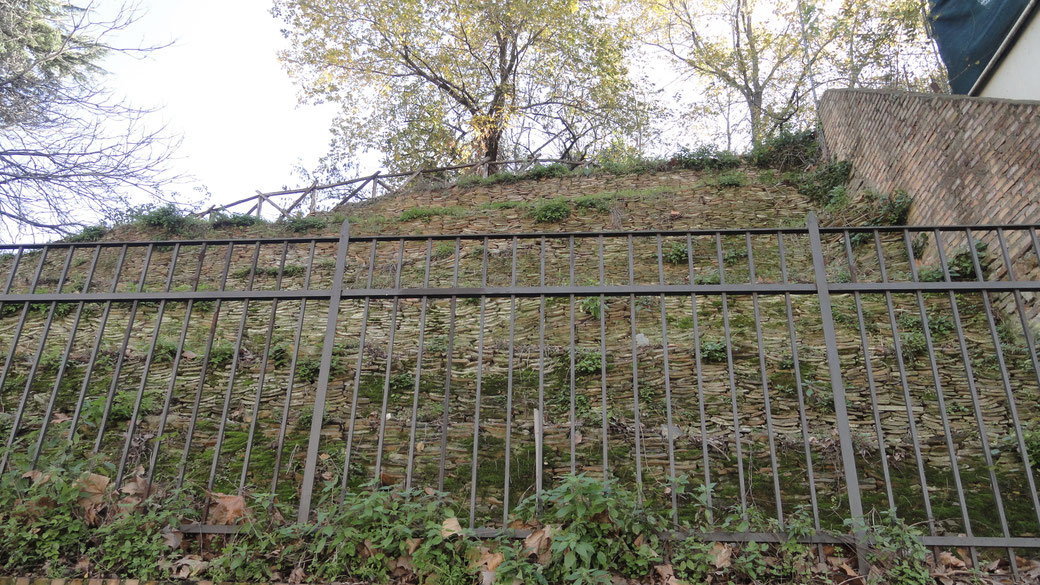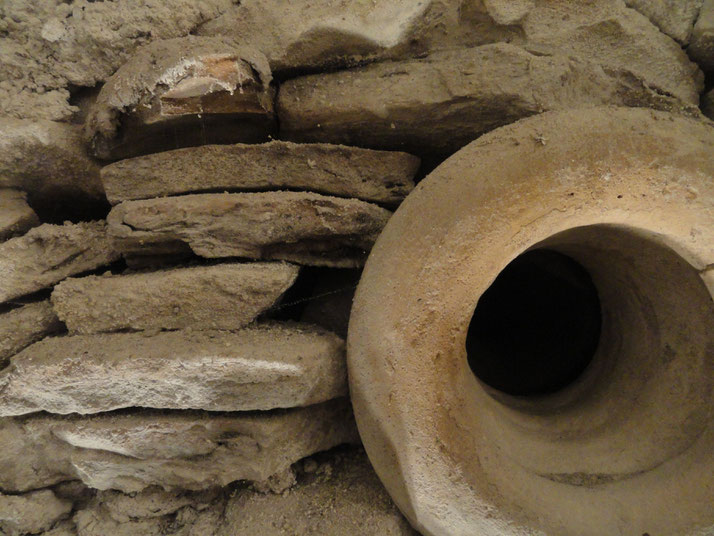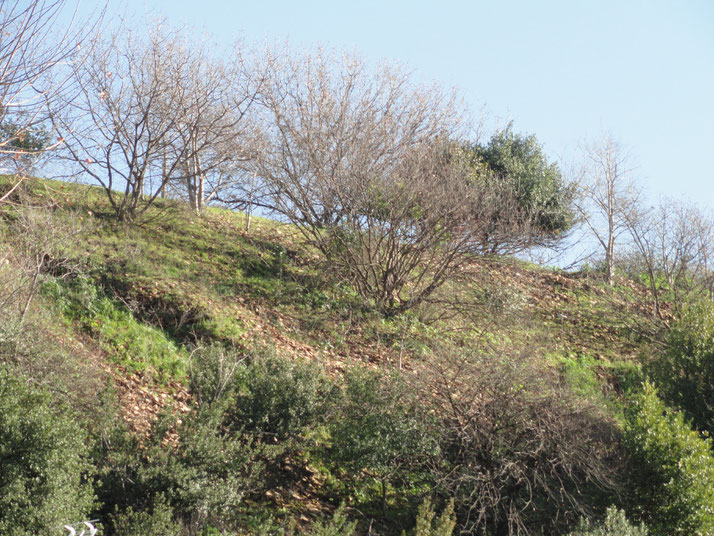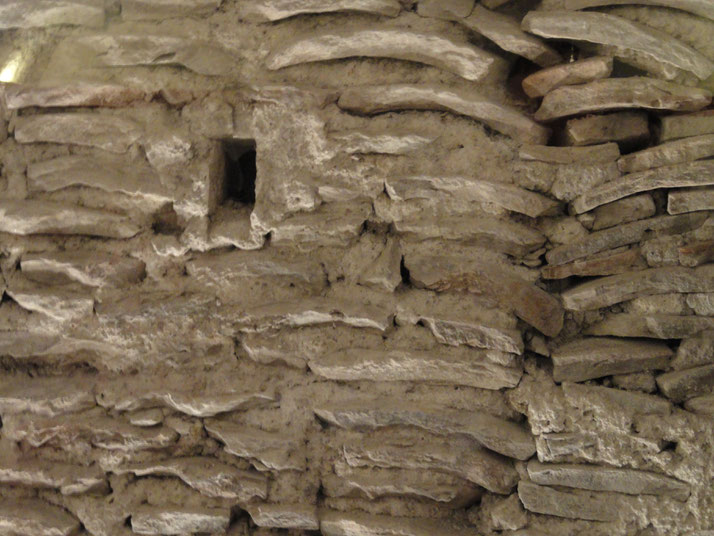Monte Testaccio: Rome's extraordinary man-made hill of ancient pottery shards

Imagine standing atop a hill made entirely of broken pottery shards, a unique testament to the grandeur of the ancient Roman Empire.
Welcome to Monte Testaccio, an archaeological treasure located in the heart of Rome's vibrant Testaccio district. This fascinating artificial mound, created over centuries as a landfill for discarded amphorae, offers an unparalleled glimpse into the trade, economy, and daily life of a long-lost civilization.
But why is it there, and why is it so incredibly large?
What is Monte Testaccio?
Monte Testaccio, located in Rome's Testaccio district, is a unique and intriguing historical site.
Also known as Monte dei Cocci, it is an artificial hill composed primarily of broken pottery shards called "testae" in Latin or "cocci" in Italian.
The Testaccio neighborhood, situated near the Tiber River in southeastern Rome, has a rich history dating back to ancient times.
The formation of the mound began in the 2nd century CE and continued until the 3rd century CE.
Why was it created?
The artificial mound of Monte Testaccio was created as a landfill for the Roman Empire, where broken and unusable amphorae were discarded after their contents were consumed.
The majority of the shards that make up the mound are from oil amphorae, clay containers used for transporting and storing olive oil. These amphorae were primarily of two types: Dressel 20 and Dressel 2-4.
The formation of Monte Testaccio took place over the course of around 100 years, during which time countless amphorae were discarded at the site.
The mound eventually grew to a height of approximately 35 meters and covered an area of around 20,000 square meters.
The sheer size of Monte Testaccio attests to the vast trade network and the importance of olive oil in the Roman Empire.

The Role of Amphorae in the Roman Empire
Amphorae played a crucial role in the Roman Empire's economy, as they were widely used for transporting and storing various goods, such as wine, grain, and fish sauce.
However, the most significant commodity stored in amphorae was olive oil, a staple in the ancient Roman diet and used for lighting, bathing, and various other purposes.
The amphorae found at Monte Testaccio were typically single-use containers, which meant that once the oil was extracted, they could not be reused.
This is due to the fact that the interior of the amphorae became coated with a layer of solidified oil residue, which was difficult to remove.
As a result, the broken amphorae were discarded, leading to the formation of Monte Testaccio.

Trade, Economy, and the Importance of Olive Oil
Monte Testaccio serves as a testament to the Roman Empire's vast trade network and the significance of olive oil in ancient Rome.
The sheer volume of amphorae found at the site indicates that the Empire imported a substantial amount of olive oil, primarily from the Iberian Peninsula and North Africa.
The olive oil trade was a vital part of the Roman economy; it not only provided food and other essential items but also fostered strong economic ties between the Empire and its trading partners.
The impressive size of Monte Testaccio is a powerful reminder of the importance of trade and commerce in ancient Rome.

Archaeological Excavations and Discoveries
The archaeological study of Monte Testaccio has provided a wealth of information about the Roman Empire's trade and consumption habits.
Early researchers, such as Rodolfo Lanciani and Augusto Castellani, conducted studies in the 19th century; however, more recent researchers like José Remesal Rodríguez have furthered our understanding of the site.
Excavations have revealed that the amphorae at Monte Testaccio were carefully arranged, often in a herringbone pattern, with layers of lime between the shards to stabilize the mound.
In addition to the amphorae fragments, researchers have found inscriptions, stamps, and other markings on the pottery, which provide valuable information about the origin of the containers, the producers of the oil, and even the people involved in the trade.
These discoveries have enabled archaeologists and historians to piece together a detailed picture of the Roman Empire's complex trade network and the role of olive oil in the ancient economy.
As a result, Monte Testaccio has become an invaluable resource for the study of ancient Rome.

Modern-Day Testaccio: A Vibrant Neighborhood
Today, the area surrounding Monte Testaccio has evolved into a lively neighborhood, bustling with activity and brimming with modern attractions.
The streets are lined with trendy bars, restaurants, and cafes, where locals and tourists alike can enjoy the vibrant atmosphere and sample the neighborhood's renowned culinary delights.
The Testaccio Market, a popular local food market, offers a wide variety of fresh produce, meats, cheeses, and other goods, drawing in both residents and visitors.
The district has also become a hub for art and culture, with galleries, workshops, and events regularly taking place.

What do you need help with?
Download ready-to-use digital learning resources
Copyright © History Skills 2014-2025.
Contact via email
With the exception of links to external sites, some historical sources and extracts from specific publications, all content on this website is copyrighted by History Skills. This content may not be copied, republished or redistributed without written permission from the website creator. Please use the Contact page to obtain relevant permission.





